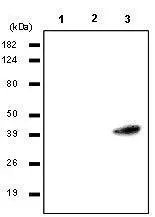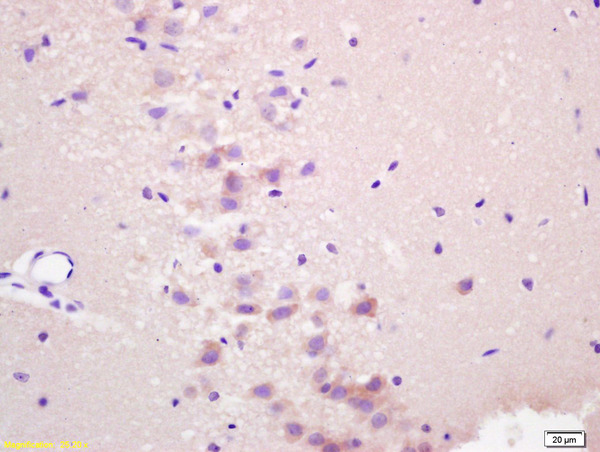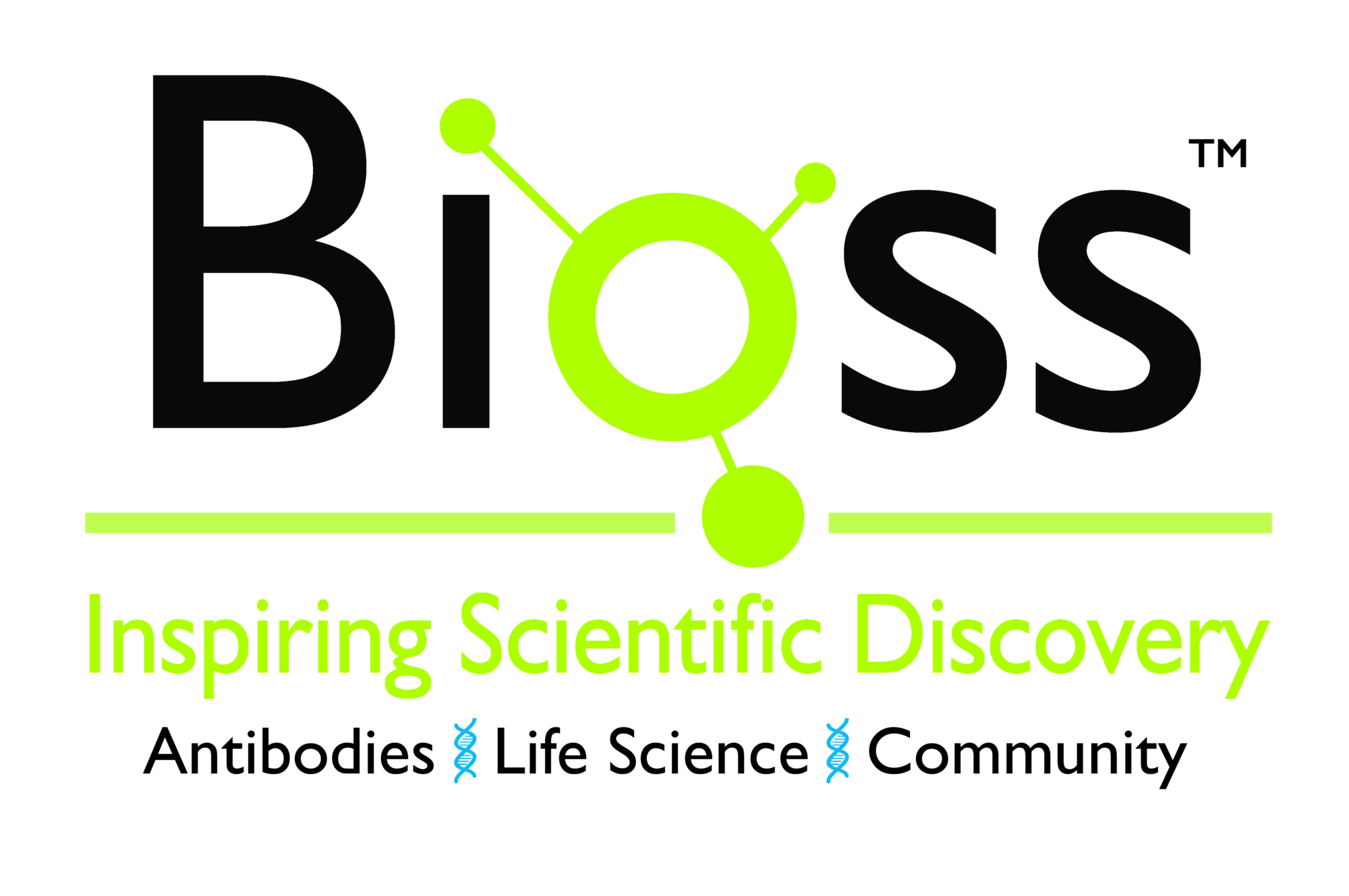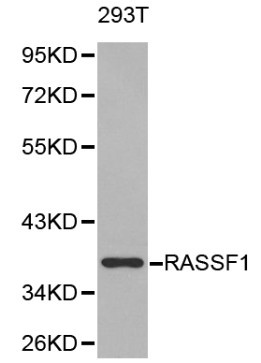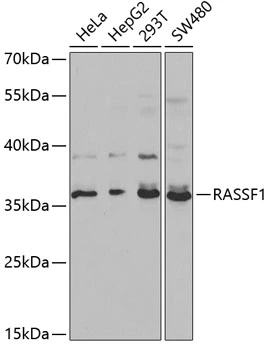
A431 cells were labeled with anti-RASSF1A (clone 3F3) mAb, and detection was using a biotinylated secondary antibody and Texas-red conj streptavidin.
RASSF1A antibody [3F3]
GTX50075
ApplicationsImmunoFluorescence, Western Blot, ELISA, ImmunoCytoChemistry
Product group Antibodies
ReactivityHuman
TargetRASSF1
Overview
- SupplierGeneTex
- Product NameRASSF1A antibody [3F3]
- Delivery Days Customer9
- Application Supplier NoteWe recommend the following starting dilutions:Western Blot: Use at 1:500 ~ 1:2,000.Optimal working concentrations should be determined experimentally by the end user.
- ApplicationsImmunoFluorescence, Western Blot, ELISA, ImmunoCytoChemistry
- CertificationResearch Use Only
- ClonalityMonoclonal
- Clone ID3F3
- Concentration1 mg/ml
- ConjugateUnconjugated
- Gene ID11186
- Target nameRASSF1
- Target descriptionRas association domain family member 1
- Target synonyms123F2, NORE2A, RASSF1A, RDA32, REH3P21, ras association domain-containing protein 1, Ras association (RalGDS/AF-6) domain family member 1, WUGSC:H_LUCA12.5, cardiac-specific ras association domain family 1 protein, pancreas-specific ras association domain family 1 protein, tumor suppressor protein RDA32
- HostMouse
- IsotypeIgG1
- Protein IDQ9NS23
- Protein NameRas association domain-containing protein 1
- Scientific DescriptionThis gene encodes a protein similar to the RAS effector proteins. Loss or altered expression of this gene has been associated with the pathogenesis of a variety of cancers, which suggests the tumor suppressor function of this gene. The inactivation of this gene was found to be correlated with the hypermethylation of its CpG-island promoter region. The encoded protein was found to interact with DNA repair protein XPA. The protein was also shown to inhibit the accumulation of cyclin D1, and thus induce cell cycle arrest. Several alternatively spliced transcript variants of this gene encoding distinct isoforms have been reported. [provided by RefSeq, May 2011]
- ReactivityHuman
- Storage Instruction-20°C or -80°C,2°C to 8°C
- UNSPSC12352203

